Hot Sauce History (Part 1): Choose Your Chilli

Hot sauce is wildly popular. There is an entire pop culture phenomenon around this spicy condiment: well-known shows like Hot Ones, viral challenges on platforms like TikTok and Twitch, festivals, and even hit songs from famous musicians. While its popularity is at an all-time high, it’s been around for a long, long, long time. Like 7000BC kind of a long time! We’ll get to all of that and explore the timeline, but first, we’ll introduce our players in this spicy game:

Carolina Reaper
Botanical Name: Capsicum chinense 'Carolina Reaper'
Scoville Scale: 1,400,000 – 2,200,000 SHU
Scoville Scale: 1,400,000 – 2,200,000 SHU
In November 2013 the Guinness Book of World Records announced a new record holder for “World’s Hottest Chilli”. The Trinidad Moruga Scorpion was overthrown and the Carolina Reaper took the crown. This dangerously hot chilli was created by crossing a Pakistani Naga with a Red Habanero type from the Caribbean island of St. Vincent. The pepper was bred in a greenhouse in Rock Hill, South Carolina, by Ed Currie.
Fun Fact: These chillies are so hot you need gloves to handle them safely!
African Bird’s Eye
Botanical Name: Capsicum frutescens 'piri piri'
Scoville Scale: 175,000 - 200,000 SHU
Also known as “peri-peri” or “the African devil” this chilli is right up there with some of the hottest in the world. Like many other chillis, it originated from Mexico and made its way to the rest of the world via Portuguese and Spanish colonialists. While it can be found growing in the wild, Malawi is the leading cultivator of the chilli followed by Kenya, Ghana, Uganda, Zimbabwe, Zambia, Mozambique, Eswatini, and South Africa.
Fun Fact: The pungency or “hotness” depends on the climate resulting in some countries growing more pungent African Bird’s Eye Chillies than others.
Jalapeño
Botanical Name: Capsicum annuum ’jalapeño’
Scoville Scale: 2,500 - 8,000 SHU
This popular chilli originated in what is now Central America and Mexico. Named by the Spanish, Jalapeño means “from Xalapa,” which is the capital of Veracruz, where they were traditionally cultivated. In 1999 Mexico dedicated roughly 43,000 hectares to jalapeño production, but the USA is still the leading producer with California and Texas being among the top states that cultivate these chillies.
Fun Fact: Jalapeños are the only chilli to have left Earth. They were taken on board the Columbia space shuttle in the 1980s.
Chipotle
Botanical Name: Capsicum annuum ’Chipotle’
Scoville Scale: 2,500 - 8,000 SHU
This may come as a surprise to some but there isn’t actually a “Chipotle Chilli”. They are in fact smoked, dried jalapeños. As jalapeños ripen on the vine, they turn red and eventually begin to dry out. They’re then harvested and smoked slowly to turn them into chipotle. It is thought that the Aztecs smoked the chillies to preserve them as they were prone to rot. It takes about five kilograms of jalapeños to make half a kilogram of chipotle chillies.
Fun Fact: The name comes from nahuatl, the language spoken by the Aztecs. It combines the words chilli (pepper) and poctli (smoke).
Cayenne
Botanical Name: Capsicum annuum ’cayenne’
Scoville Scale: 30,000 - 50,000 SHU
Most folks will have heard of this chilli, even those who aren’t spice enthusiasts. It’s thought to originate from Cayenne, French Guiana. It travelled around the world thanks to Portuguese merchants in the 15th and 16th centuries, and is now commercially grown in the USA, Africa, India, Japan and Mexico.
Fun Fact: While most cayenne peppers are red, you can grow yellow and purple varieties too.
Habanero
Botanical Name: Capsicum chinense ’habanero’
Scoville Scale: 100,000 - 350,000 SHU
This chilli originates around 8,500 years ago in the Amazon, eventually spreading to Mexico where today it is a staple on Yucatán Peninsula. They are the largest producers of this chilli which form an integral part of their cuisine. Once the Spanish discovered it, they spread it around the world resulting in 18th-century taxonomists thinking it originated in China and naming it “Capsicum chinense” or the “Chinese pepper.”
Fun Fact: Habaneros are high in vitamin C, aka ascorbic acid, which is a powerful antioxidant.
***
Now you know! Check back soon for some more interesting info on the timeline of hot sauce as we know and love it today!






Comments
Piquant Chilli Sauce said:
Thank you for enlightenment
August 30, 2024
Piquant Chilli $auce said:
Thank you for enlightenment about. Variety of Chilli
August 30, 2024
Relene Croukamp said:
This is so interesting
August 12, 2022
Cliff Norman said:
Great information
August 04, 2022